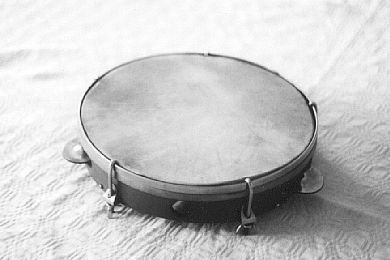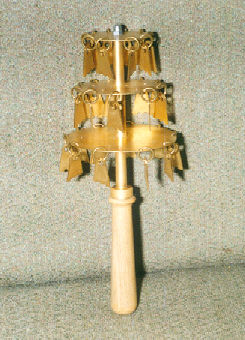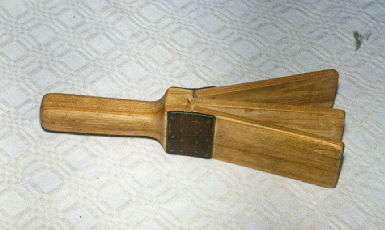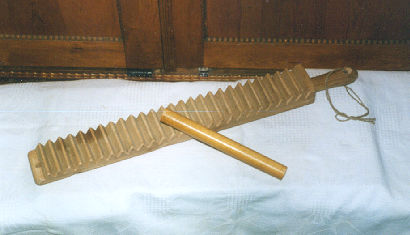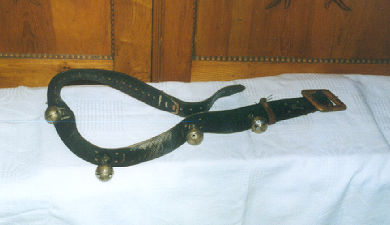|
|
|
|
|
Folklore groups
Instruments Activities About us |
|
|
|
On alphabet
By type |
|
|
|
Support
Fonts Mpeg3 Links Addresses Statistics Guestbook |
|
|
|
You are visitor of folklora.lt and visitor of this page. |
|
Pulsatile instruments
This page contains the items of information on different pulsatile
instruments, except drum,
to which a separate page is allocated.
Timbrel was brought to Europe from Asia by wandering musicians,
to Latvia it came
in the end of XVIII century from Poland and Belorussia.
The threestick has been mentioned in written sources for the first time in
XVIII century, however its (and other similar instruments - bell tree,
rattle sticks, chagans) use on weddings is indicative of their ancient origin.
Similar instruments are not spread even at the closest neighbours, what can
testify to their local origin.
Bell tree is made from a fur-tree top or a rich branch. The small branches
are peeleled, bent and adhered to the main branch. Afterwards birds feathers,
cocrowbar, reed, coloured strips of matter and papers, are adhered to them to
decorate the bell tree and sounding strings, buttons, campanulas and bells
are attached.
Clappers make by an attachment of plates to a wooden basis.
The washboard, of course, first of all is intended for washing linen, however
people always have known how to use household objects for playing music.
Harness bells were hung to a vehicle during a celebration, for instance,
wedding.
Triangle Latvian (especial Latgalian) musicians use from a beginning of
XIX century. |
|
Questions, comments and suggestions are welcome to ansis_N@N_folklora.lt This page is created with support of SFL, Latnet and Lanet. |
|
03 September 2018 |
